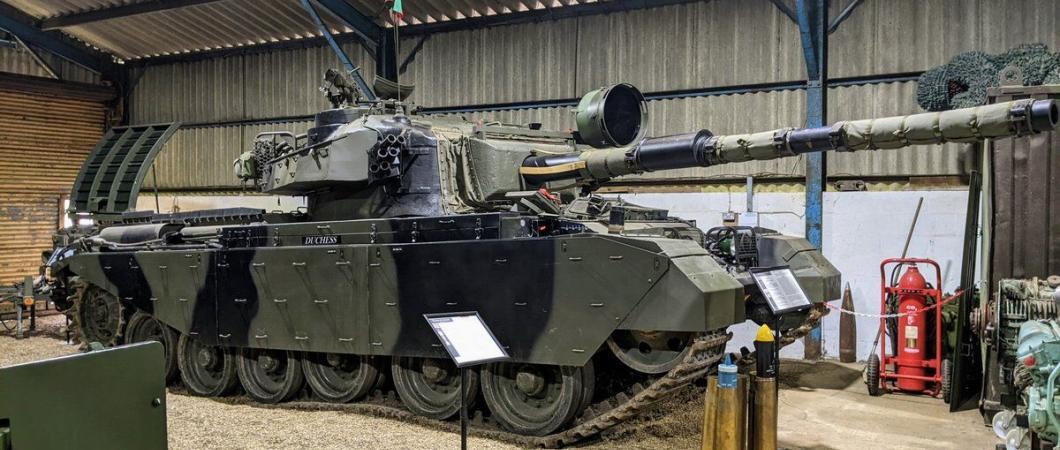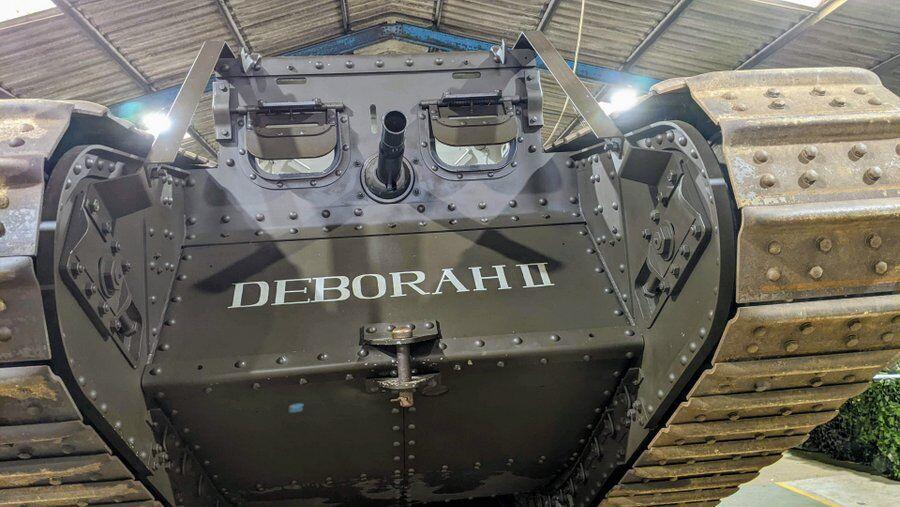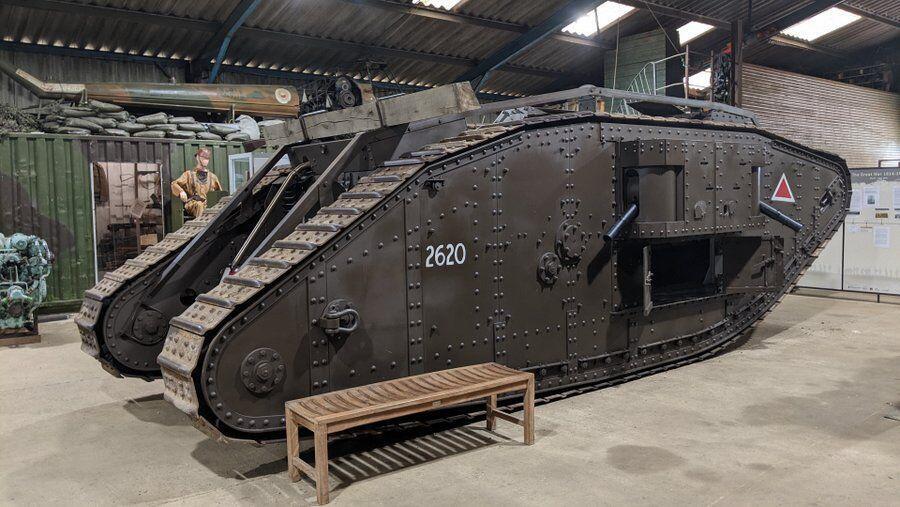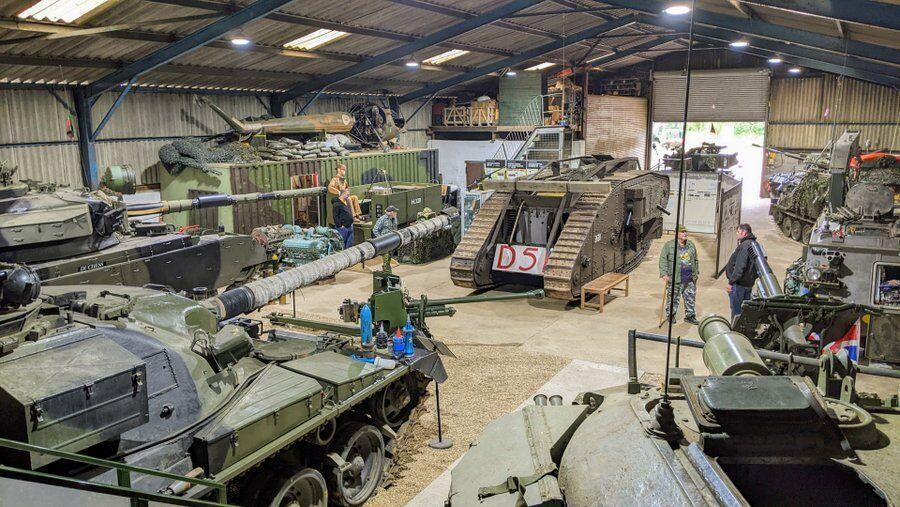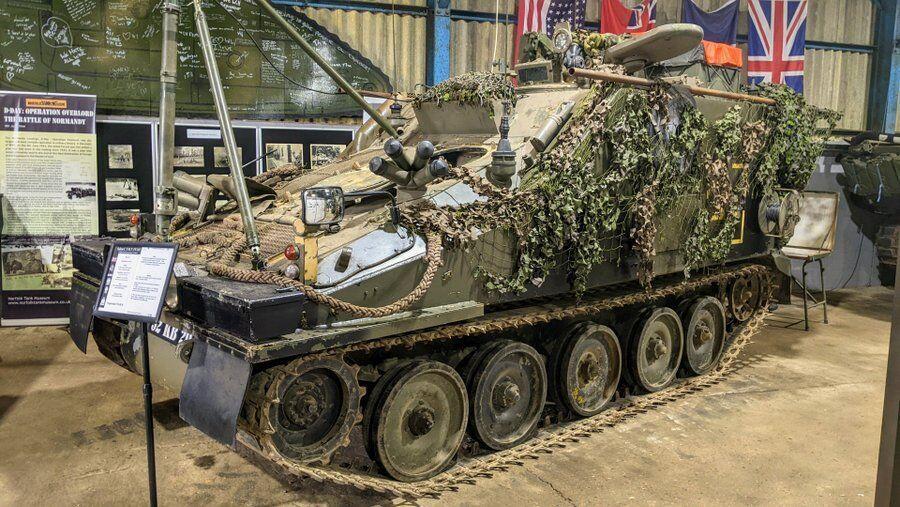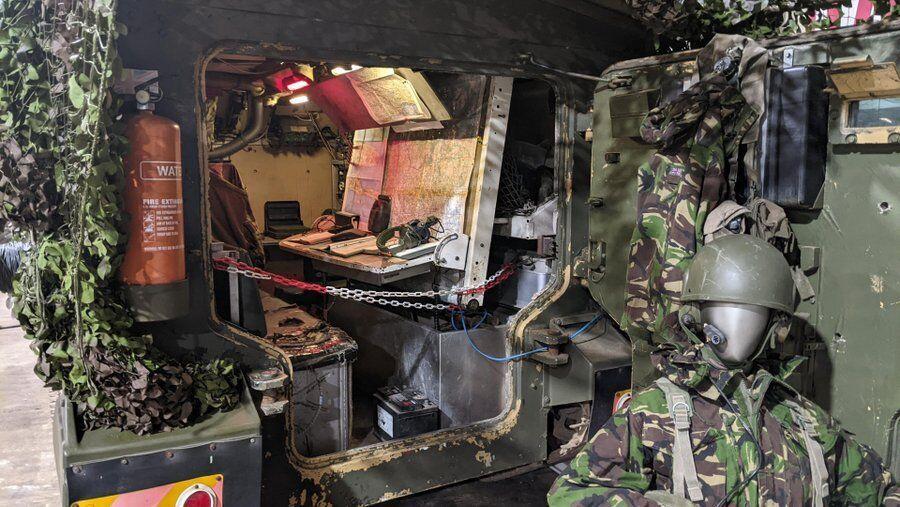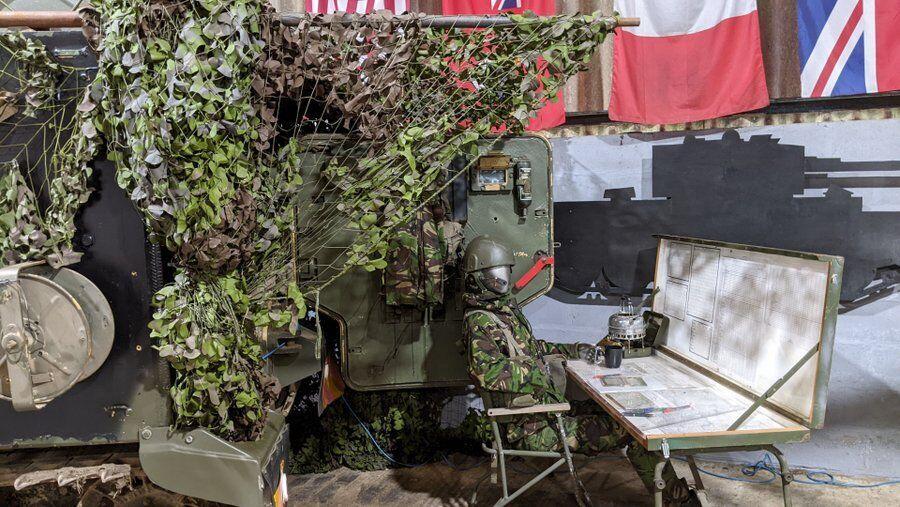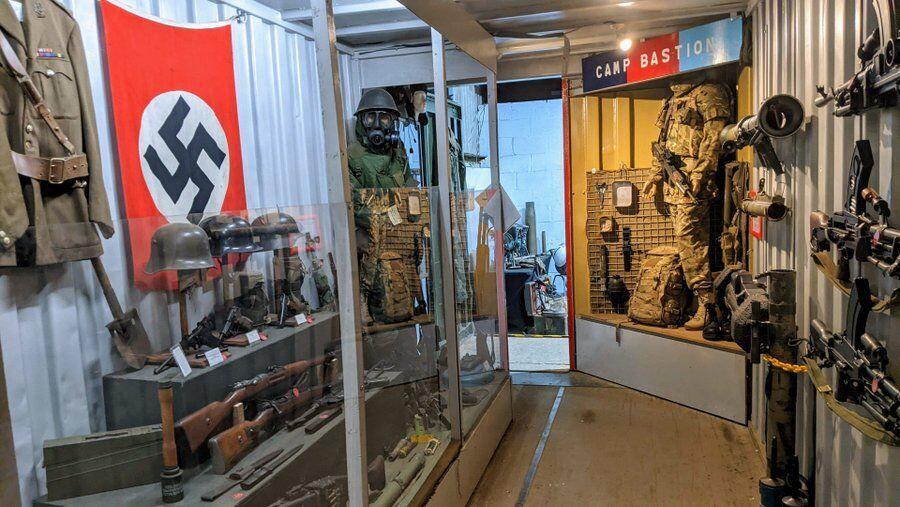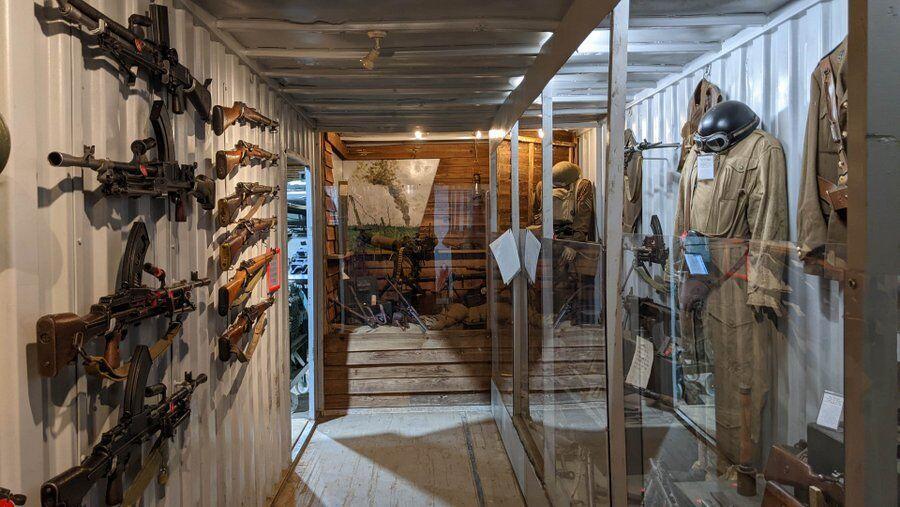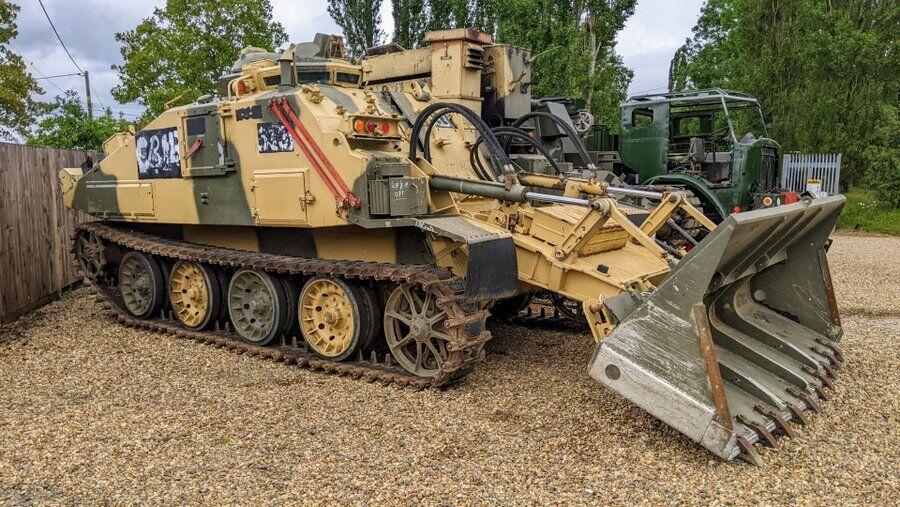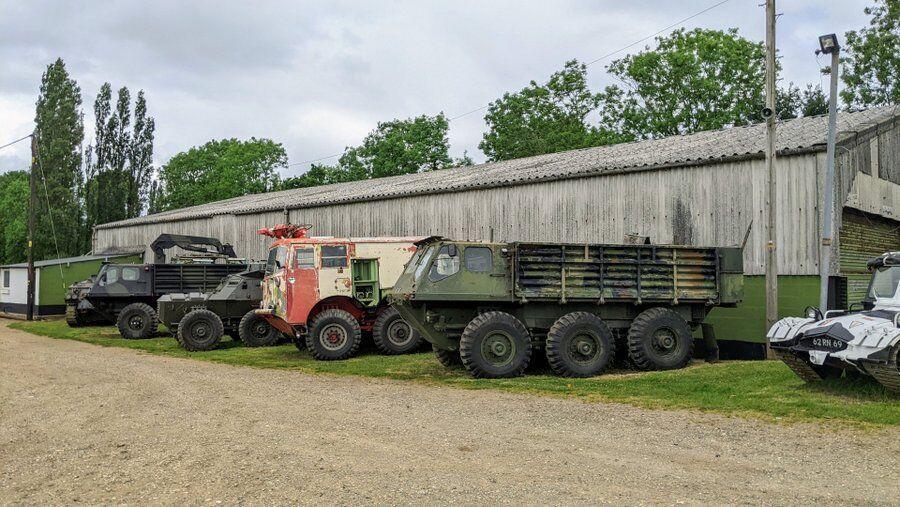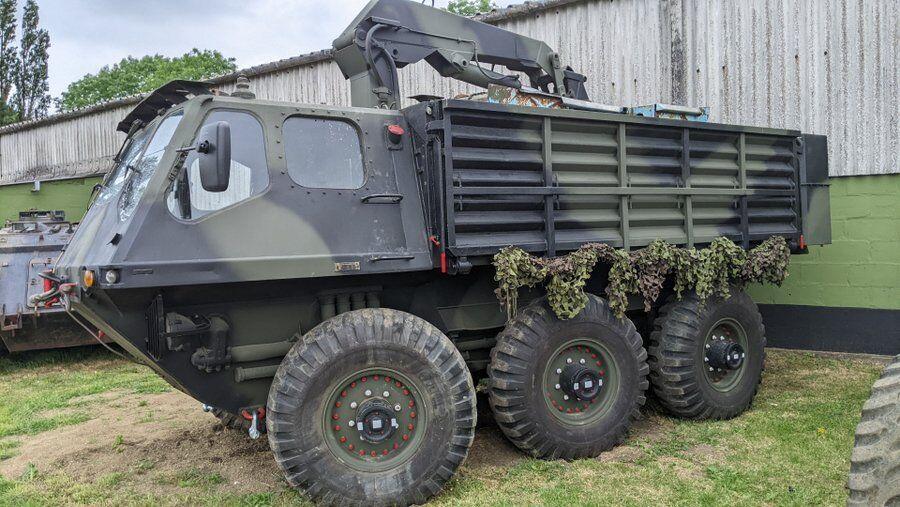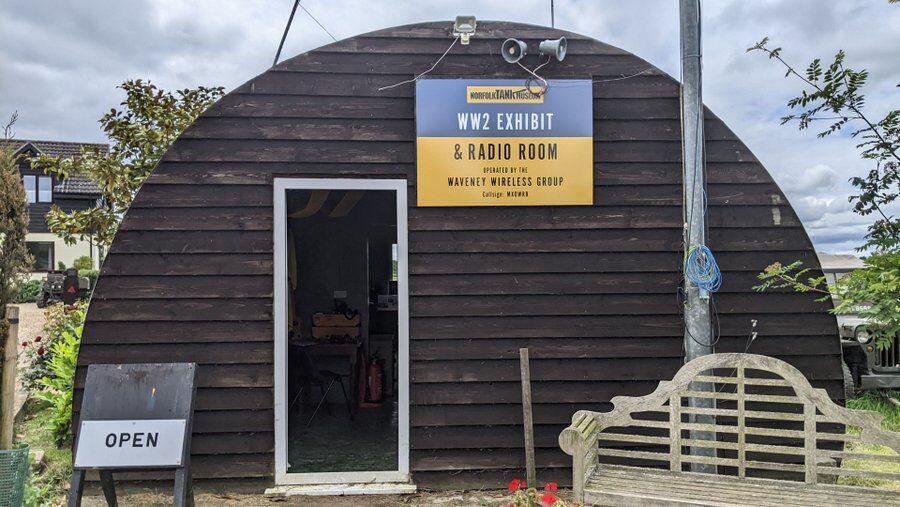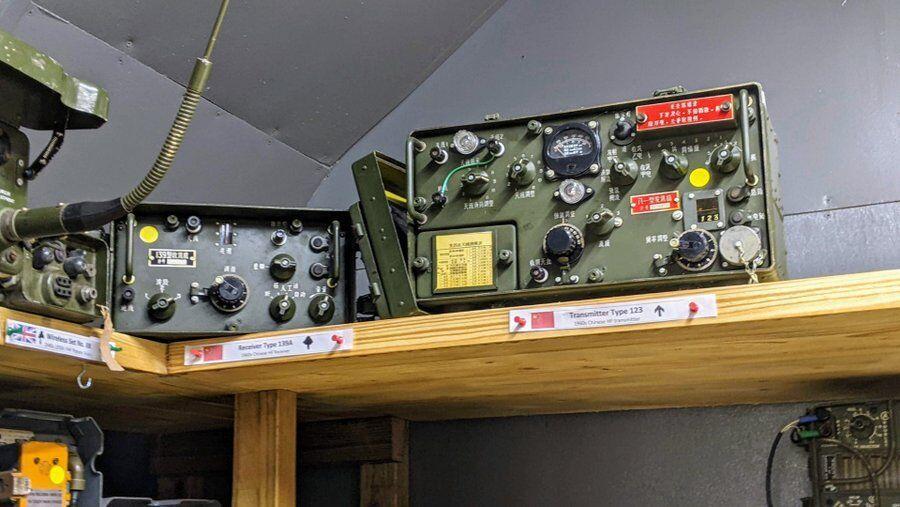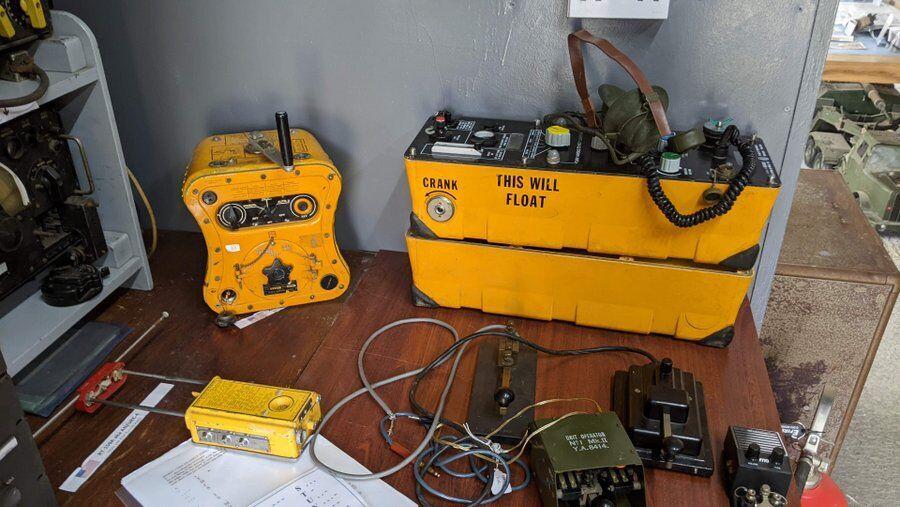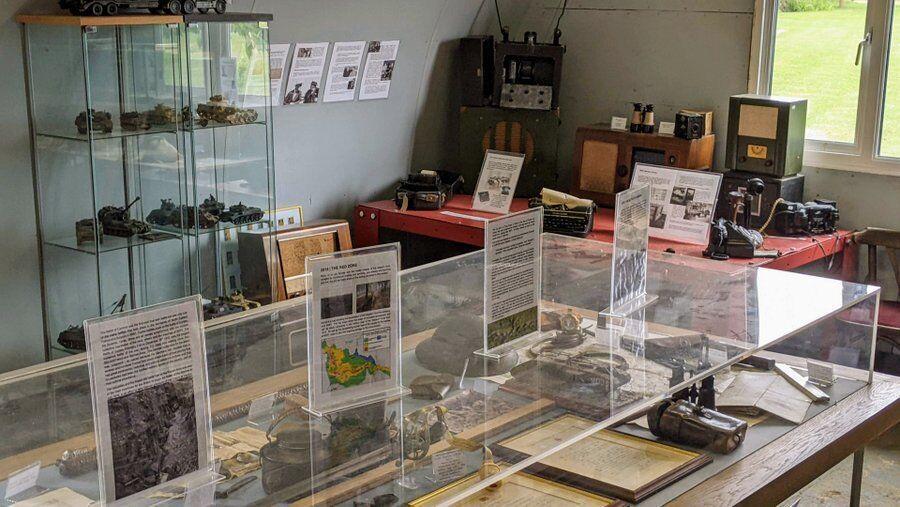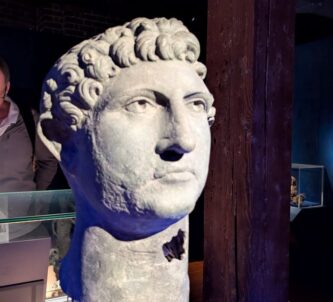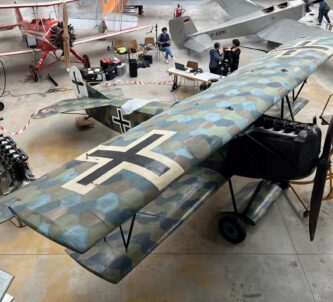The Norfolk Tank Museum is more like an enthusiastic private collection than a formal museum. It is also a work in progress… or at least many of the tanks are. That doesn’t matter because, while it might not be as big or formal as for example, the tank museums of Bovington or Saumur, it has some unique stuff and it’s fun.
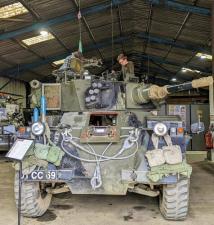
his Saladin armoured scout car
One way in which it is less formal than many tank museums, is access. Many tank museums have a general ‘keep off the tanks’ policy, but the Norfolk Tank Museum has a number of tanks that you (or your kids) are welcome to climb on and get inside. There needs to be a guide – Health & Safety and all that – to ensure you don’t fall off or crack your head open on the gun breach, but if you want to see inside a tank, just ask.
Also, in common with many tank museums, it has a couple of large fields in which the operational tanks can be demonstrated or ridden. If you sign up for their ‘Tank Experience’ you can race around the fields as commander of a Saladin armoured car and drive their Swedish Hagglunds BV 206 tracked all-terrain vehicle. In August the fields are used to demonstrate all their working vehicles and stage re-enactments during their 2-day ‘Armourfest’ – which is only a few weeks away!
Norfolk Tank Museum – The main hanger
The main hanger is the only hanger, and it houses most of the star tanks in the collection, including the replica WW1 Mk 4 tank, Deborah II, built for Guy Martin’s documentary series on Channel 4 TV in 2017.
The idea was they would build the tank for the 100th anniversary of the Battle of Cambrai in which the new wonder weapon proved itself… and where the original Deborah was knocked out.
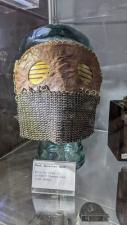
(It looks very
‘steampunk’ to me!)
Three things I didn’t know until I read the museum’s info on it…
- The digger manufacturers, JCB cut the steel and fabricated the hull using their state-of-the-art computerised cutting and welding machines… so the rivet heads were welded on for effect!
- Those funny rails on top were to handle the large wooden log (like a long railway sleeper) which they used when the tank was bogged down in mud. The log was stored on top at the back. All they had to do was attach chains at each end to the tracks, and then set the tracks in motion. The log was pulled over the top of the tank on those rails, and around under the tank.
- Spall was a big problem. Every shell or bullet strike on the outside sent out a cloud of small particles (spall) from the inside, injuring the crew. So they wore heavy protective clothing, and anti-spall masks.
This is an interesting pairing…

Two armoured reconnaissance vehicles built two decades apart: one (the ‘Sabre‘) tracked and built in the 1990s, the other (the ‘Fox‘) wheeled and built in the 1970s. Both manufactured by Alvis with the same engine, virtually the same armament, same crew, same top speed, same fuel consumption, and only a one ton difference in weight (tracks are heavier than wheels)!

The FV434 is one of the versatile FV430 tracked vehicle series* It is a repair & recovery vehicle. Royal Electrical & Mechanical Engineers (REME) FV434s carry spare engines which can be quickly lowered & fitted into tanks and other armoured vehicles. There’s an FV434 on display down at the REME Museum in Wiltshire, along with a range of other specialist vehicles.
The FV105 Sultan is taller than most Armoured Personnel Carriers (APC) giving it more interior space. That’s because it was designed to be a mobile Command Post with a map board and multiple radios inside. When parked up, the camouflaged ‘office’ tent can extend outside. It can carry a crew of six personnel. It’s still in use with a number of armies.
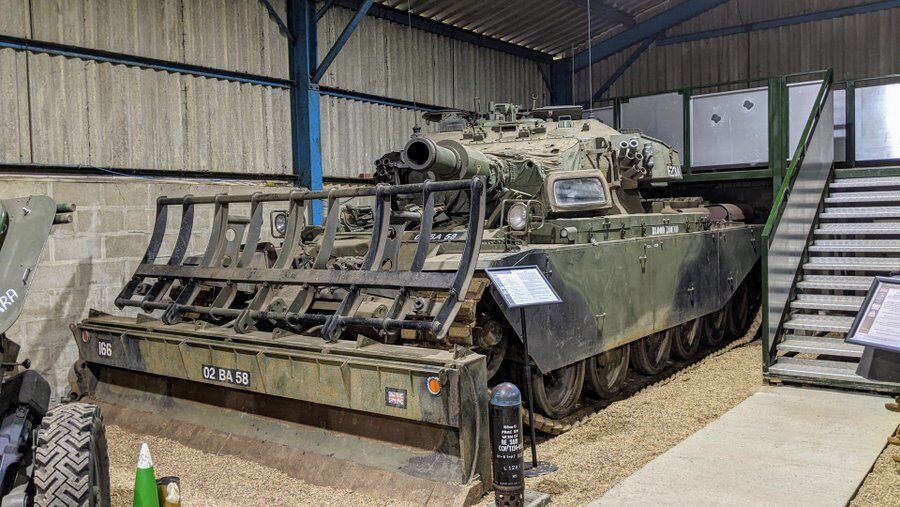
Just like their famous predecessors in Normandy in 1944, the AVRE tanks (Assault Vehicle, Royal Engineers) of the 1960s and later, were designed to clear obstacles, fortifications and concrete bunkers. In 1944 they had hefty demolition guns or petard mortars. This 1960s Centurion AVRE FV4003 had a bulldozer blade for clearing light obstacles like road debris, sandbags & barbed wire, and a 160mm short barrelled gun firing a 60 lb (29 kg) High Explosive Squash Head (HESH) shell. This one at the Norfolk Tank Museum served in Germany during the Cold War and with 32nd Engineer Regiment in the first Gulf War.
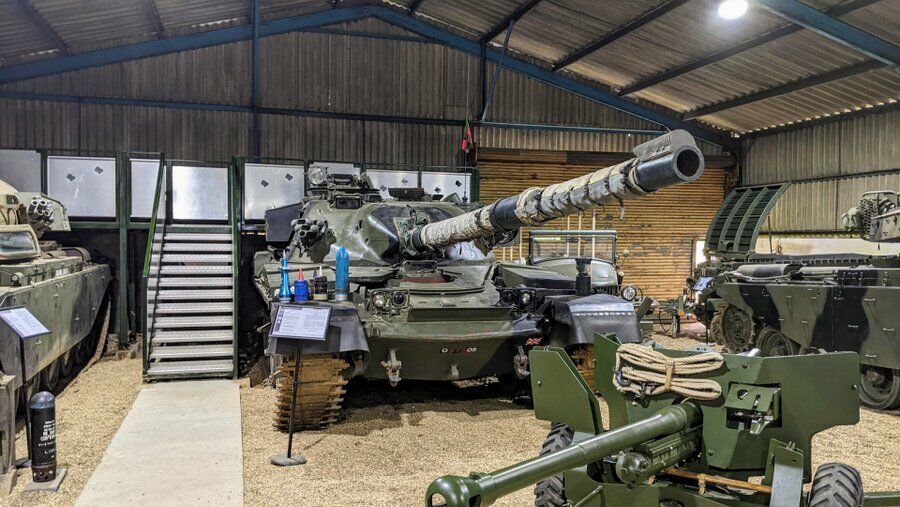
The Chieftain Mk2 and Centurion Mk13 (feature image above) are two of the star tanks in the main hanger. They just look big & solid, as Main Battle Tanks (MBTs) should! Both of these are operational and appear out in the arena for events like Armourfest.
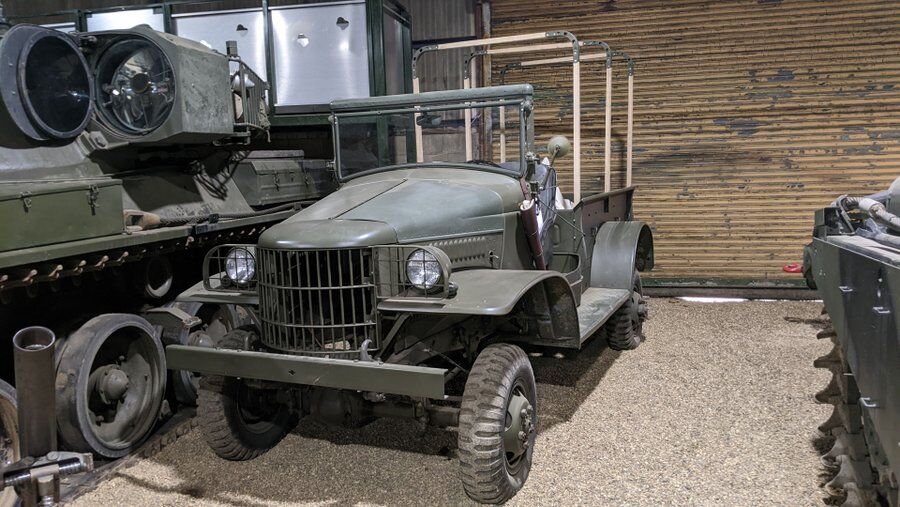
There are a number of smaller items on display in the main hanger, such as a Dodge ½-ton WC-13 weapons carrier. I was trying to think if I’ve seen one of these before. I don’t think I have. There were so many variants of Dodge cars & trucks during WW2, and they look very similar. The Overlord Museum in Normandy has a splendid Dodge WC-56 Command Car that has that ‘Dodge’ look. Maybe that’s what I was thinking of?
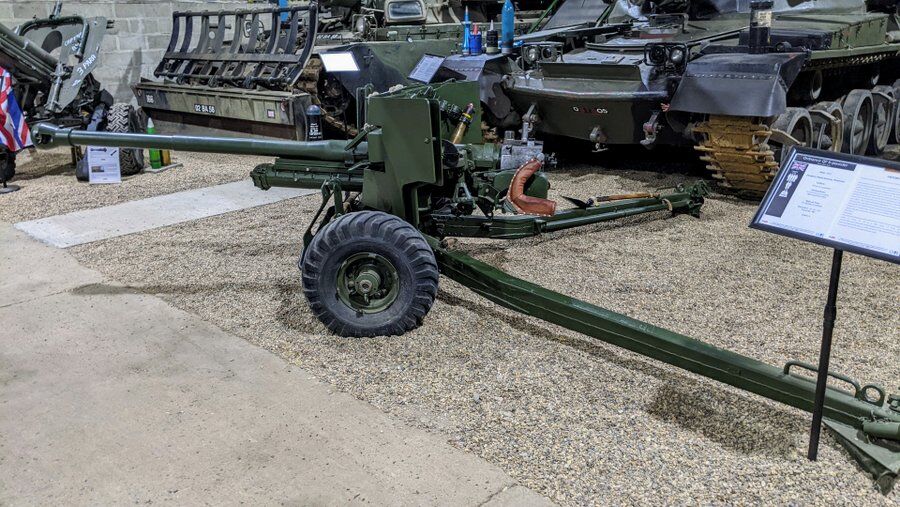
The Norfolk Tank Museum has a Quick-Firing (QF) 6-pounder (57mm) anti-tank gun. These were amazingly effective and efficient guns during WW2. I saw one being demonstrated at last year’s We Have Ways Fest; quick to set up, quick to fire and lethal for most early German tanks. The 6-pounders couldn’t penetrate the frontal armour of later Tiger & Panther tanks, but they could disable them. It was 6-pounders that disabled the famous Tiger 131 in Tunisia.
The other piece of artillery on display in the main hanger has an interesting history.
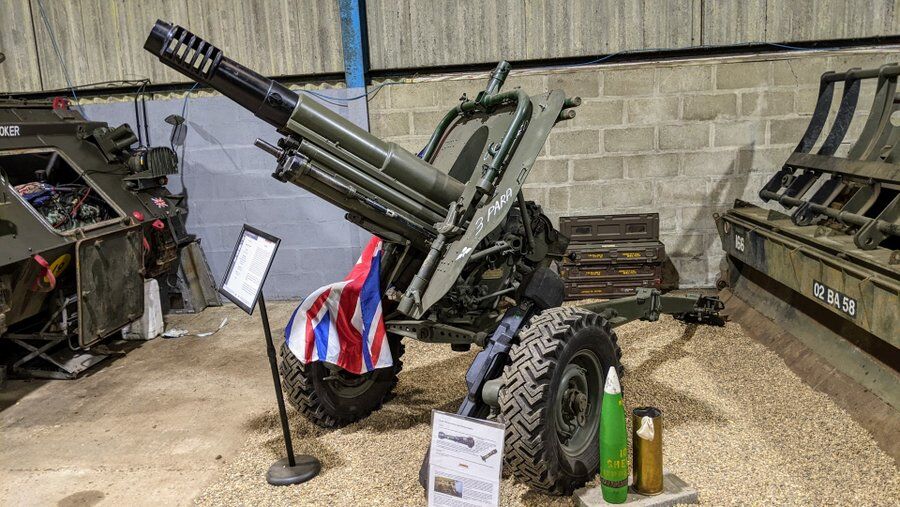
The 105mm L5 Pack Howitzer was designed by the Italian army to be a lightweight gun that could be broken down into component parts and carried into battle (up mountains if necessary). The British Army used them for a while in the 60s/70s (they were easy to carry slung under Wessex helicopters) before selling them off to Argentina. This one was used by the Argentinians to shell British forces on the Falklands. It was captured at Port Stanley and returned to the UK.
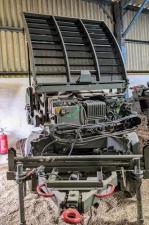
And, tucked away in the corner (space is at a premium in the main hanger) is one of those things I love to discover in military museums; a piece of kit I’ve not encountered before. This one is a towed Cymberline radar unit, used by the Royal Artillery from 1975 to 2003, to detect incoming mortar shells and locate their point of origin for counter-battery fire.
This is a Mk1 version mounted on a trailer. Mk2s were mounted on an FV432, one of the FV430 series*.
Cymberlines saw action in the Falklands, the Gulf War and in the Balkans, where they were used around Sarajevo to track ‘heavy weapons’ violations.
Norfolk Tank Museum – The Armoury
The Armoury is an impressive collection of small arms displayed in a shipping container in the main hanger. The weapons range from First World War to present day, and from pistols to rocket launchers.
I wouldn’t ordinarily link to somebody else’s review but a few years ago Paul Charlton, AKA war game streamer ‘The Mighty Jingles’ reviewed the Norfolk Tank Museum. (I saw it at the time. Made me want to visit!) It’s not only a good review in general, but specifically on the Armoury, he has a better idea than me of what’s significant in here. Paul’s review.
Outside the main hanger
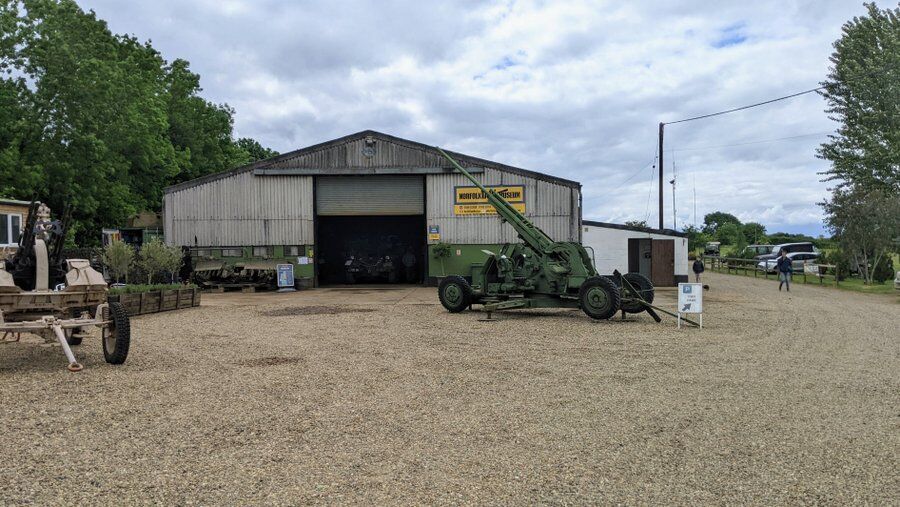
In the forecourt, where the café & ticket office is located, there are a number of semi-permanent vehicles & AA guns (Czech & Russian) awaiting or undergoing restoration.
In particular, a Centurion Armoured Recovery Vehicle FV4006, and the spectacular FV180 Combat Engineer Tractor which has been in service since 1976.
A bit like many early Swedish tanks, it’s actually a dual direction vehicle, with the bulldozer blade mounted on the back. The driver/operators sit together on the left side of the vehicle with dual controls facing in opposite directions. The forward facing driver can drive the 17½ ton vehicle at speeds up to 35mph (56kph). The rear facing driver/operator drives it in bulldozer mode. It’s designed for clearing obstacles, digging tank or gun emplacements, or anti-tank ditches. It is also used for preparing bridging operations. It is amphibious and has a rocket-propelled anchor on a 100m hawser attached to an 8 tonne winch which can be used to help it climb steep banks. It just fires the anchor up the bank and then draws itself up. It is also NBC (Nuclear, Biological and Chemical) proofed. Quite a vehicle!
Parked down the side of the main hanger are again, a number of vehicles in various stages of refurbishment. When I was there, there were a couple of amphibious 6-wheel 5-ton ‘Stalwart’ High Mobility Load Carriers (HMLCs) from the 1960s, but still looking modern! There was a tracked Snowcat, a rather dilapidated airfield fire engine, another FV432 Armoured Personnel Carrier with some missing undercarriage, and the un-mistakable 6-wheel Saracen Armoured Personnel Carrier – built in the 1950s, used by armies, police and security organisations around the world, and still used by some even to this day.
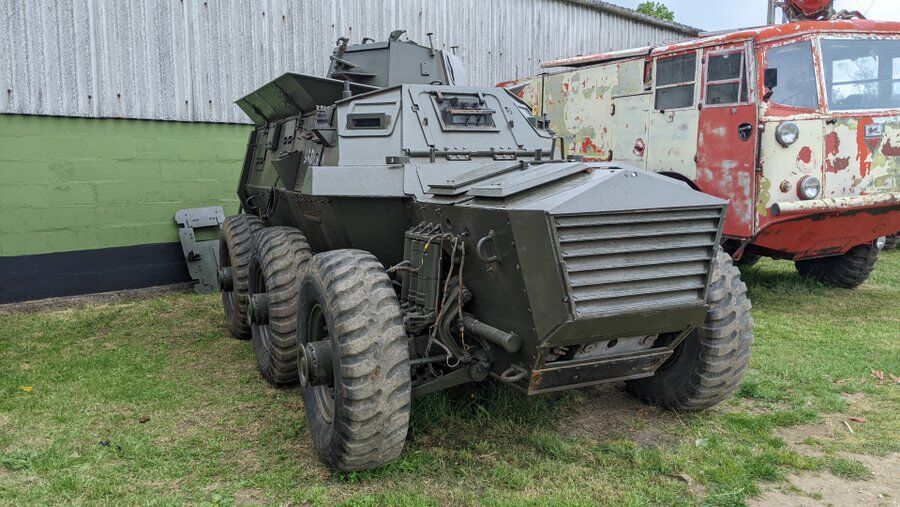
It may, too, have given much pleasure to a former toy army general who fondly remembers his Dinky diecast model Saracen… together with his Dinky Centurion, and his Britains model Saladin (which fired matchsticks! Eat yer heart out, Norfolk Tank Museum!).
On a patch of grass at the back of the hanger, the museum has some WW2 German and Cold War Soviet equipment awaiting refurbishment.
On the German side are two 15 cm sFH 18 field howitzers separated by a Stug III self-propelled assault gun.
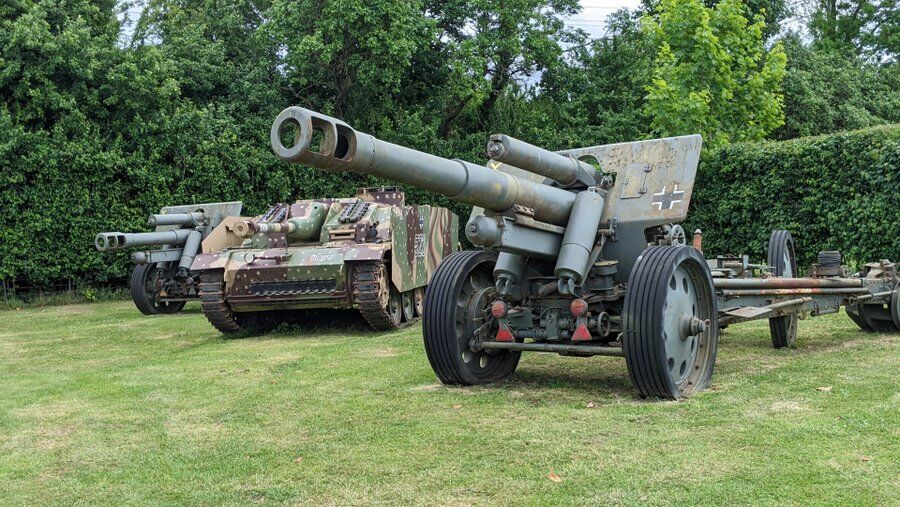
The two howitzers are really interesting. When I first saw them I really wasn’t sure if they were 1st or 2nd World war era. They looked ‘old-fashioned’. It turns out they are a bit of both; WWII guns based on a WWI design.
In the inter-war years when Germany was secretly re-arming in contravention of the terms of Treaty of Versailles, they used several ploys to evade discovery. The creation of “pocket” battleships is perhaps the best known, and Luftwaffe flight training in gliders in Germany but in powered aircraft away from prying eyes in the Soviet Union, was another. These guns looked like WWI stock left over after the war to an Allied observer, but actually they were new guns with modern improvements built into them.
The museum speculates that, since these two guns have some Russian modifications including the addition of muzzle brakes, the chances are that they were captured during Hitler’s disastrous misadventure in the Soviet Union.
It’s nice to see the StuG III (Sturmgeschütz III) in the middle, though not unusual. They were, after all, the most-produced tracked vehicle in the German army, so many museums have one**. However, it turns out this one is actually a film prop.
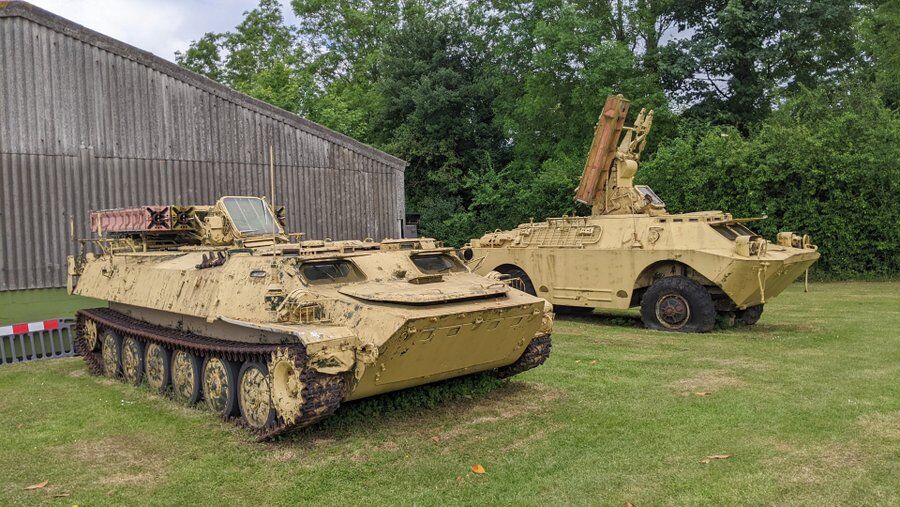
On the other side of the lawn are two Russian close-support anti-aircraft missile carriers, built around 1970 and both looking a little shabby at the moment. That’s the thing with vehicles displayed outdoors; they need lots of maintenance otherwise they deteriorate quickly. (It’s even worse for aircraft museums. Thin aluminium skinned aircraft practically dissolve in front of your eyes when left exposed to the elements. If you return to the museum a week or month later you can see the deterioration!) I’ve seen photos taken in 2017 of the wheeled SA-9 Gaskin amphibious missile carrier with a new coat of paint and looking almost ‘ready for action’. What a difference 5 years in the rain can make!
Next to it, is the later tracked version: an SA-13 Gopher, which could fire the same 9M31 Strela-1 surface to air infrared guided missiles as the SA-9, or an improved 9M37 missile.
Both these vehicles were sold to Saddam Hussein’s army and were subsequently captured and brought back to the UK for evaluation after the First Gulf War.
Norfolk Tank Museum – The Nissen Hut

The Nissen Hut has a dual function. It has a collection of WW2 memorabilia and models, but it is also where the museum’s collection of military radio equipment is kept, overseen by the local Waveney Wireless Group.
I hadn’t expected to spend much time in here but these guys really know their stuff and they are really enthusiastic about it. I spent ages in here learning about WW2 radios, the various iterations of the Cold War British Clansman radios… and their Chinese, and Russian competitors.
And I can now spot a Lancaster bomber radio set, with its big colourful knobs for heavily gloved hands, at a hundred paces, in or out of context!
Declaration: None needed. I was in the neighbourhood and just turned up. I paid to get in.
* FV430 tracked vehicle series…
FV431 Armoured load carrier
FV432 Armoured Personnel Carrier
FV433 Field Artillery, Self-propelled 105 mm gun
FV434 REME Maintenance carrier
FV435 Communications vehicle
FV436 Command and control vehicle
FV437 Pathfinder amphibious scout vehicle
FV438 Swingfire – Guided missile launcher
FV439 Signals vehicle
FV430 Mk3 Bulldog – Upgraded troop carrier
** I’m pretty sure Bovington has one, and I’ve seen StuG IIIs in a few other places including the French tank museum in Saumur, and the Land Warfare hall at IWM Duxford.
Factbox
Website:
Norfolk Tank Museum
Getting there: Norfolk Tank Museum
Station Road
Forncett St Peter
Norfolk
NR16 1HZ
Easiest by car and there’s a free car park on site.
If you came by train to Diss, it’s a 25 min taxi ride from there. From Norwich station it’s 30 mins. (Disheartingly the Norwich-Diss line passes right alongside the tank museum! A shame there isn’t a stop there!)
I couldn’t help but notice that there were a handful of caravans and motorhomes around the edges of the car park. It turns out this is Tas Valley CL, a Caravan & Camping Club ‘Certified Location’. So if you wanted to stay overnight, and you are a C&CC member, you could stay on site.
Entry Price:
| Adults: | £8.00 |
| 5-12 yrs : | One free with each paying adult |
| 12-18 yrs: | £4.00 |
| Under 5s: | Free |
Opening Hours:
Summer months only, between Easter & November.
Open 10.00 – 17.00 on Tuesdays, Wednesdays, Thursdays and Sundays.
Events:
The big annual event is the 2-day ArmourFest held in August. This year it is on the weekend of 13-14 Aug. In addition to the tanks in the arena, there will be vehicle rides, military and medieval re-enactors, exhibitors, and a 40’s Hangar Dance with Live Big Band music.

